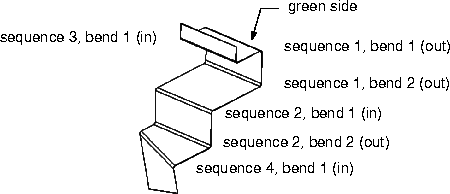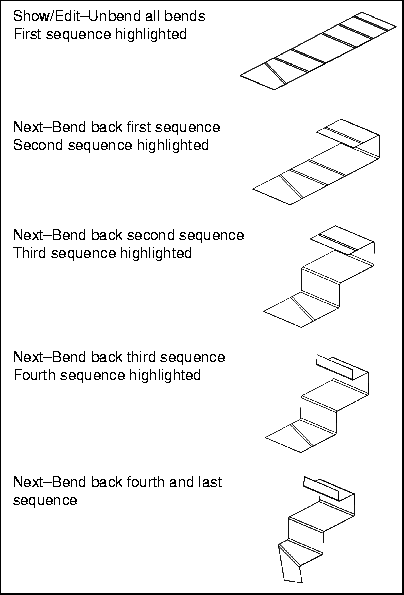Book Name: Sheetmetal User's Guide - Note this is taken off the web from Pro/Engineer
L-Developed length.
R-Inside bend radius.
Y-factor-A part constant defined by the location of the neutral bend line (see the following illustration). The default Y-factor is 0.5.
T-Material thickness.
-Bend angle (in degrees).
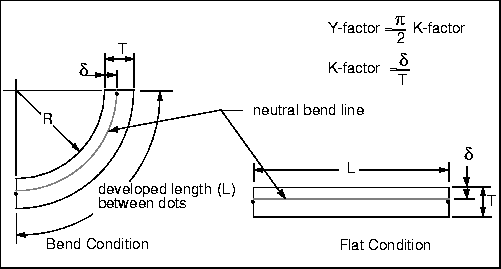
If a bend table is currently assigned to the part, the system prompts you to confirm that you wish to discard it. Choose Confirm from the CONFIRMATION menu.
The ENTER VAL menu appears.
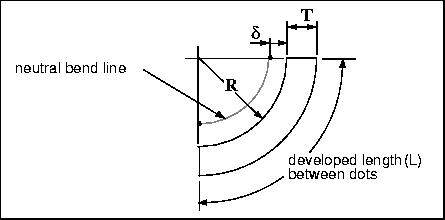
The following table, Bend Table Format shows the Pro/TABLE format. Enter the appropriate data in the columns.
Bend Table Format
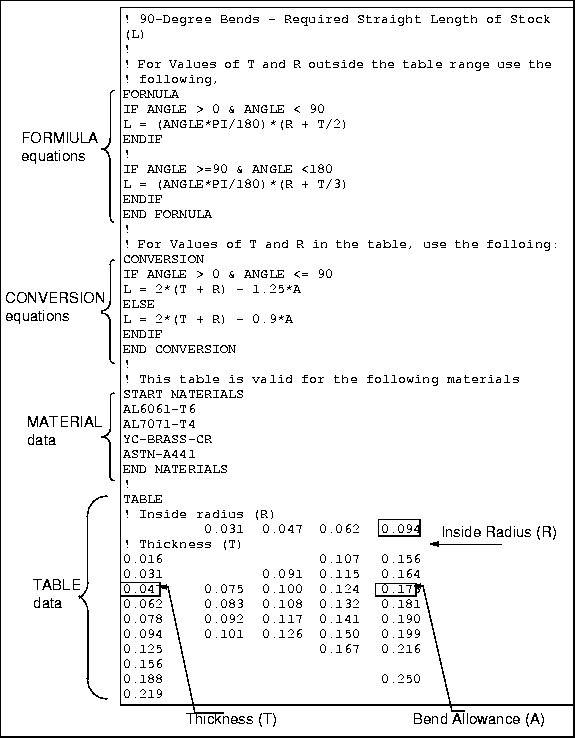
An explanation of the data for Pro/TABLE follows.
Formula Equation
Formula is an equation used to
calculate the developed length for any radius or thickness values that fall
outside the range of the table data. The variables that you can use in
the table are:
Conversion Equation
The conversion equation tells
the system how table data (A) is related to the developed length (L). If no
conversion equation is defined, the system assumes that table data equals
required length, that is L = A. In a case where the table data represents, for
example, the bend deduction value (see Example
of Determining a Conversion Equation for an example) such an equation might
look like:
The variables you can use in a conversion equation are:
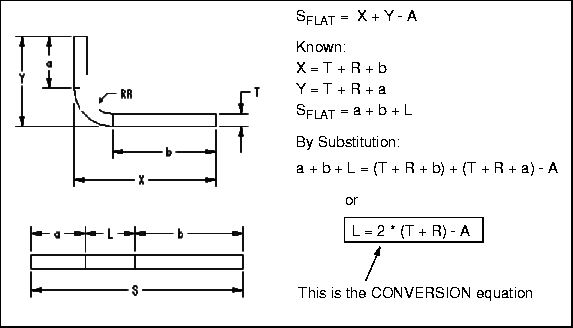
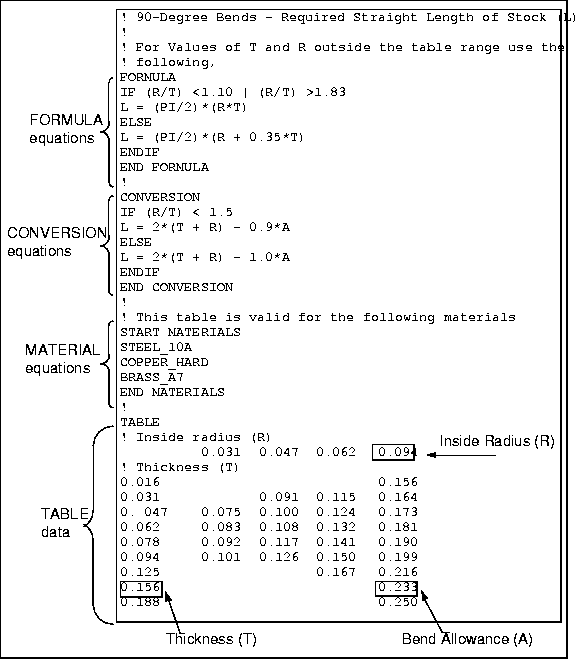
...or...
Choose Define from the BEND TAB menu.
A Pro/TABLE window displays with an outline table in it.
...or...
Select File, then Read from the Pro/TABLE pulldown menu to use another bend table as a baseline.
A dialog box appears and prompts you to enter the full name of the file. After you enter the filename, the system reads in the file from disk and writes it over the current file in session. You can then edit the file.
A Pro/TABLE window displays with the selected table in it.
...or...
Choose Names and enter the name of a bend table file (including the path, if necessary).

